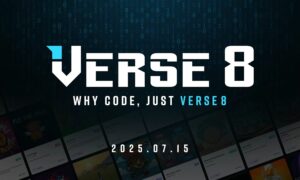The internet has become a video-centric platform. With the rise of this type of content, it is vital for your business, brand recognition, and the health of your customer relationships to be aware of the analytics underlying the videos you post online.
Fortunately, through the use of AI (Artificial Intelligence), it’s never been simpler to gain insight into your target audience’s thoughts, emotions, and behaviors. It is vital to use social video analytics to better understand your audience and remain ahead of the competition.
There is no doubt that artificial intelligence (AI) is influencing the evolution of video creation. Video is likely the go-to tool for the great majority of organizations when it comes to content marketing — and its popularity is only going to rise.
However, this content form is not without its problems. To begin, creating high-quality video content necessitates a large investment in time, talent, and video production expenses – prices that can quickly outweigh those of other content development methods and platforms.
Second, with the majority of customers dismissing brand-generated content as meaningless clutter, content creators are under intense pressure to offer engaging and high-conversion customer experiences to an audience that may or may not be receptive.
Fortunately, breakthroughs in Artificial Intelligence (AI) are enabling marketing teams and individuals to optimize and expedite video production workflows, allowing them to generate more focused content that is more receptive to the audience, in less time and with fewer resources.

Understanding More About Artificial Intelligence and Video Creation
Many elements of the creation and distribution processes can now be handled by artificial intelligence. It can now film, edit, select, and share videos on the internet.
AI enables the development of more tailored or personalized videos, resulting in increased engagement.
Filming
Artificial intelligence has cleared the path for drone-assisted automatic filming. Drones can maintain the subject in the frame while hovering in the air or while avoiding obstacles in flight. It does not require any human interaction or instructions to do this.
There are drones with some of the most astonishing functions such as recognizing and reacting to gestures, following and shooting subjects, and opting for the best path when returning to the home base. This technology is expected to be implemented in other sorts of cameras too.
Video Editing
Video editing may now be done automatically thanks to artificial intelligence. A camera may now function autonomously, without the need for human intervention. Cameras can now choose the most crucial moments and edit the videos accordingly. Examples include GoPro’s Quikstories smartphone app, which can instantly generate an edited and shareable film, and SoloShot, which provides automatic editing capabilities.
Sharing Videos
AI is also keeping track of how videos are shared online. As it affects user reach, brands are gravitating toward video advertising.
We frequently find questionable video content on websites such as YouTube. This sort of problem is presently being addressed with the use of Artificial Intelligence, which allows for video analysis. This will also safeguard the safety of the brand.
AI-powered Social Video Analytics
Obtaining actionable insights from video content using social media video analytics that go beyond likes and shares to understand what your audience thinks is no longer a pipe dream. While likes and shares are great, social video analytics and video AI bring the marketing necessity of genuinely knowing your audience to life.
Content creators have begun to follow the trend of video content engagement and enticement by employing useful videos to captivate their audience and improve brand visibility. Every day, millions of videos are posted on the internet, and as this number rises, so does the urge to effectively search and analyze the content.
Social Video Analytics can help you by offering the following:
- Intelligence that spans across several social platforms
- In-depth knowledge of your target audience
- Optimization of your videos to grow your audience
- Actionable insights obtained from your video content
- Analyze your competitors
- Improved content and programming strategies
How Explainer Video Tools Use Artificial Intelligence?
We took a look at how simpleshow video maker works as an example; here, you need to write an explainer video script using the established templates accessible on the explainer video creator site. Alternatively, an existing PowerPoint could be uploaded and used as the script. Once completed, the real magic happens.
The incredible artificial intelligence program identifies keywords, rates them in relevance, and records human speech. The explainer engine is designed to recognize keywords and their relationship to the context of the content.
When the keywords are matched with the existing information in the database, the relevancy of the keywords generates a plethora of related picture choices from the visual data. As a result, the content creator can readily choose from the large range of graphic representations available to him.
Integration of existing data in the template
When the programming process is completed, existing information and knowledge are activated, resulting in the matching process. The semantic recognition enables the program to create rapid links between words and images.
Layout automation
The explainer program uses logical artificial intelligence to match words or sentences with visuals that have the most similar meanings. It provides relevant and various keyword options for content authors to pick from. The program also identifies the texts mentioned and aesthetically groups them, making it easier for the creator to select from.
Text-to-speech conversion
Text-to-speech software is used by video producers such as simpleshow.com. This software already includes a voice database that contains different speech units classified as phrases, phones, morphemes, and linguistics.
This database is analogous to an image or visual database. The procedure is the same in this case as well. The written text is compared to the speech database, then aligned, and voice output happens.
Conclusion
The combination of text and video, along with the revolution of AI, enables content creators and marketers to get more out of their digital marketing efforts and a greater return on investment. With all of this in mind, it’s essential to stay up to date on the newest trends and approaches for using AI in your video content creation and marketing activities.

































